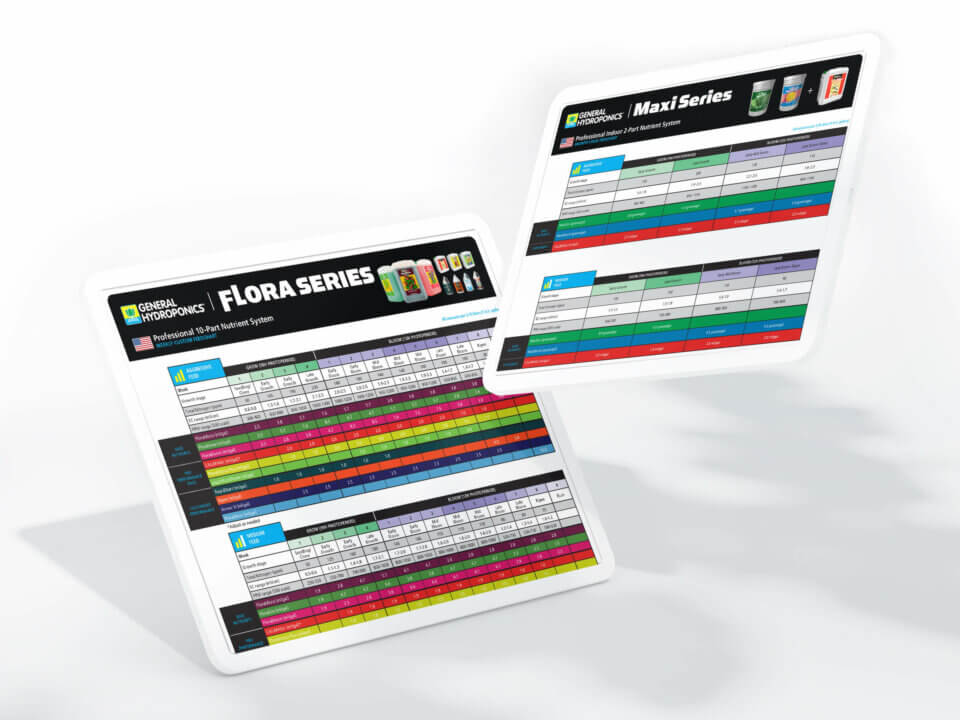- product

ProRelease™ Field Formula
ProRelease™ Field Formula is a blend of coated and uncoated granulated fertilizers designed for field-grown crops like hemp and other medicinal herbs. Apply at the start of your season and watch your crops thrive. Feeds for up to 4 months*.
- product

ProRelease™ Cool Climate Container Formula
ProRelease™ Cool Climate Container Formula is a 100% coated granulated fertilizer formulated for cool conditions (CC). It is designed for crops such as hemp and other medicinal herbs grown in containers, raised beds, or fabric grow pots. Feeds for up to 4 months* at 70℉.
- product

ProRelease™ Warm Climate Container Formula
ProRelease™ Warm Climate Container Formula is a 100% coated granulated fertilizer formulated for warm conditions (WC). It is designed for crops such as hemp and other medicinal herbs grown in containers, raised beds, or fabric grow pots. Feeds for up to 4 months* at 90℉.
ProRelease™
General HydroponicsOur Controlled Release Fertilizers (CRF) are granulated fertilizers designed to be applied directly to a plant’s root zone. CRFs slowly and predictably release fertilizer over time, continuously feeding for months with only a single application! This allows for unprecedented ease of use and control for professional growers – reducing labor costs while providing peace of mind that plants receive even, extended feeding periods.
When used as directed, General Hydroponics® ProRelease™ Field Formula, ProRelease™ Cool Container Formula and ProRelease™ Warm Container Formula provide plants with a consistent source of nutrients throughout their growing cycle. Simply incorporate the appropriate formula into your favorite growing mix – or top-dress, water, and you’re done.
ProRelease™ comes in three different blends to suit various needs. Use as a stand-alone fertilizer or with other General Hydroponics products for a tailored approach.
For the ultimate in precision crop-nutrition management, we recommend using ProRelease™ as the backbone of your fertilizer program and strategically deploying General Hydroponics FloraPro™ or Flora Series™ water-soluble powder or liquid fertilizers throughout the growing cycle to help steer your crop.
Meet the family
Can help reduce labor costs
Whether used alone or with other General Hydroponics products, ProRelease™’s single application can help reduce the amount of labor needed to fertilize your crop. For help in determining which formula and fertilization strategy are best for you, please reach out to our Technical Services Advisors.
Insurance policy
Growers know that outdoor conditions can be unforgiving. Heavy rainfall can wash water-soluble fertilizers away from root zones. When used as directed, ProRelease™ nutrients stay where they’re applied, even when a growing media’s nutrient-holding capabilities are low.
Combination fertilizer programs
For growers seeking add-on crop-nutrition management, we recommend ProRelease™ as the backbone of your fertility program, and deploying General Hydroponics FloraPro™ or Flora Series™ water-soluble powder or liquid fertilizers throughout the growing cycle to help steer your crop.
For use with
Plants
- Hemp
- Vegetables
- Herbs
- Fruits
- Flowers
- Other high value crops
Media
- Potting mix
- Coco
- Peat lite mix
- In-ground soil
Environments
- Indoors
- Outdoors
Experience
- Intermediate
- Expert

Grow like a pro
Explore the most comprehensive offering of commercial growing solutions tailored to support your entire operation end-to-end and get the greatest possible returns while staying one step ahead of the competition.
Getting started
Learn from the best
FAQs
-
Our Feedchart Usage Guide explains how to interpret and use General Hydroponics® Pro Feedcharts. It is intended as a companion piece to General Hydroponics® Pro feedcharts for FloraPro®, FloraSeries®, and Maxi Series™.
-
Absolutely! All of our nutrient blends contain the necessary elements for plant growth. Start with the formula ratios identified on the label for the specific plant or crop you are growing, and then adjust and experiment until you find the right formula for your specific need.
For further information, refer to our feedcharts.
-
pH is a measure of the hydronium ion H3O+. It is based on a logarithmic scale from 0 to 14. “Pure” water has a pH of 7.0. If the pH is less than 7, the solution is acid. If the pH is greater than 7 it is alkaline. Because the scale is logarithmic and not linear, a pH of 6 indicates ten times more H protons than a pH of 7, and a pH of 5 indicates 10 times more protons than a pH of 6.
-
Ventilation is often overlooked as a problem. Plants absorb nutrients when the water molecules in the leaves respire (i.e. evaporate). Better ventilation aids a high transpiration rate, which translates into a greater rate of nutrient uptake. Remember that ventilation means changing the air, not just blowing it around the room (circulation).
-
pH is important because it affects availability and absorption of several of the 16 atomic elements needed for plant growth. Maximum absorption of these elements is found at pH readings 5.5 to 6.5. When pH falls below this range many of the macro elements (N, P, K) have less availability, and absorption of the micro nutrients can reach toxic levels.
-
Water containing too much calcium and magnesium (called “total Hardness”) may create serious problems. Contact your municipal water supplier who can provide you with an analysis of your water supply. If you are using well water, many laboratories can provide you with an analysis if you send them a sample. If the dissolved salts in your water supply measure 200 ppm or more, we strongly recommend that you obtain a water analysis to determine calcium content. Excessive calcium is the main factor in determining if your water is hard. If an analysis of your water supply reveals that the Calcium content of your water supply is greater than 70 ppm (mg/liter) you should use Hardwater FloraMicro. Hardwater FloraMicro provides rapidly growing plants with a combination of chelated micro nutrients uniquely formulated for hardwater conditions. Other options are to collect rainwater, install a reverse osmosis filtration system, or use purified water. Do not use mineral or “spring” water, which can unbalance the nutrient solution, or even be toxic to plants.






